A Report on Erasmus+ VISIT – Visually Impaired Sightseeing in Town, Bologna, November/December 2014
From 29th November to 7th December 2014, I was a participant in the Erasmus+ VISIT seminar – an event bringing together 24 sighted and visually impaired young people from Cyprus, Germany, Georgia, Poland, United Kingdom and Italy to learn and experience innovative cultural activities created for visually impaired people.
The programme aimed to go beyond the categories of ability and disability. Visually impaired and sighted participants alike shared and created methodologies and practices of social inclusion and explored Bologna through its smells, sounds and physical materials. We discovered the city’s museums, churches and squares through “multisensorial explorations” created specifically for visually impaired people using various pedagogical aids (for example, tactile maps, 3D models and Braille).
The programme was created by La Girobussola, an association established in December 2013 promoting mobility activities for visually impaired people. La Girobussola implement multisensorial events in the tourist and cultural fields; cooperate with local stakeholders to promote accessible culture for visually impaired people; create artistic and cultural laboratories and workshops for visually impaired people; and create of workshop and cultural events to promote visibility of the needs and experiences of the visually impaired.
The seminar was the first experience for La Girobussola as Erasmus+ programme organisers and thus was as much a learning experience for our organisers as it was for the participants. Similarly, despite the variety of multisensorial tours offered to us, many of the tour guides La Girobussola partnered with to deliver the programme had little experience of delivering cultural tours to audiences with visual impairments.
The group of participants was quite mixed: we ranged in age from 22-30 years old, with under just half of us having a visual impairment, and a handful of participants having had little or no experience working or socialising with visually impaired people.
The week was filled with beautiful, enlightening, freezing, frustrating, drunken and chaotic moments and left me surprisingly emotional at the end. In order to process my thoughts, I’ve written a brief description of my thoughts on each part of the experience. Enjoy!
30th November
After our arrivals and icebreaking (read “drinking”) session the previous day, La Girobussola provided an introduction to the program where we each introduced ourselves. They then facilitated two group discussion sessions, one on our personal experiences relating to similar seminar or exchange programmes abroad, and the second on people’s perception of disability within their own country.
As a representative from Germany, I found it somewhat difficult to contribute to the discussions. As I’ve only been here for the past two years, and not having a visual impairment myself, I was in no way prepared to take on the role of an authority on this subject. However I was able to share my experiences of living in Australia and the UK (where I have been a resident longer) and compare those experiences with what I had seen in Germany so far. I spoke about what I have perceived as a lack of visibility of disabled people within the mainstream media and in society and I was able to talk more generally about how I think disability is perceived in Germany and recent political changes that affect this. Specifically, I spoke about Germany’s ratification of the UN Convention on the Rights of People with Disabilities in 2009, and the subsequent influence this has had on modifications to the public transport system, current debates regarding inclusive schools and efforts being made within the cultural sector to improve accessibility (of which I am proud to be a part of).
It was fascinating to hear about the different infrastructures supporting people with disabilities in other countries such as Poland and Italy, who I believe have abolished segregated schooling for disabled/non-disabled children (although there still are Blind schools), and to hear about the efforts that grassroots organisations such as Mariani in Georgia are making to improve accessibility to culture. We debated the pros and cons of separate school systems for blind and visually impaired children, and particularly in terms of the need to provide independent living skills but also social integration and interaction between disabled and non-disabled children and teenagers. We talked at length about the attitudinal differences in different countries, and the realities of the spectrum of how having a disability can be viewed – as something to be pitied or ashamed of, as something to accept as a simple fact, or as something to wear with pride as a part of one’s own identity.
1st December
After a pretty full first day of discussions, we were able to get out of our hotel and see a bit more of Bologna by walking to the Municipality Library. There, La Girobussola facilitated another round of group discussions on the successes and problems facing visually impaired people from different EU counties in their daily lives. Each group had a different theme to tackle – love, travel, sport or education – and the results were shared with everyone at the end. Many of the participants found the selected topics difficult to talk about, particularly those who had had negative experiences. For example, the group discussing “love” had a dynamic discussion as a small group, however felt it difficult to then relay the results in a presentation to the rest of the group.
I felt that what was holding a lot of people back was a desire not to dwell on negative experiences, especially the visually impaired participants who had experienced them, and a shyness from the sighted participants who were afraid to ask too many probing questions. We had just begun to scratch the surface when we had to break for lunch, stopping short what was a really interesting discussion.
After lunch, we embarked on a “Multisensorial exploration” of the city centre where we explored the Piazza Maggiore. Now, I’m afraid I have to be quite critical here. Whilst I appreciate that our friendly tour guide had little experience working with audiences with visual impairments, and that she had made an effort to make her existing tour format more accessible through the use of audio equipment and tactile maps and Braille, the tour could not be described as “multisensorial” as it really only focused on two senses – touch and sound.
What did work was the guide’s selection of a small area in which to focus her tour. Brilliant, I thought, less walking with maximum attention paid to the detail of what we did experience. The aspect the worked the most successfully here was the Whispering Corners where participants were able to interact with the architecture of the Piazza and with another to test out the “magical” acoustics.
Sadly, I found her use of the audio guide (which wasn’t really a guide, but what museums and galleries refer to as a hearing loop – a gadget that amplifies the sound of the tour guide’s voice through a microphone and individual earphones for each participant) to be quite confusing and disorienting. Rather than using the hearing loop to guide the group and keep us together through quiet or echoing spaces, or to describe the detail of the buildings or objects we viewed, it was used simply to increase the volume of her voice. Many of the participants, both sighted and visually impaired, became bored as the guide was only able to devote her attention to a few people at a time to encourage them to touch certain objects. While she gave a wonderful historical narrative, without actually describing the scene, interior space or materials, many of us who couldn’t see from the back of the group felt excluded and lost track of what she was referring to. Having only one earphone, navigating the space also became an uncomfortable and unbalanced experience for some.
However, La Girobussola welcomed our feedback and we enjoyed the rest of the evening with an incredibly entertaining Intercultural Night!
2nd December
Our third day of activities took us to the Bologna Botanic Garden where we had a tour with two enthusiastic and knowledgeable guides. As participants, we were able to touch almost everything, and at the suggestion of La Girobussola, additional handling objects were made available to describe more complicated facts (such as the anatomy of different types of flowers) in more detail. My only criticism of the tour was the length, which after two hours, seemed very long for some weary and sleep deprived participants!
Luckily some free time allowed us to explore the city in smaller groups or pairs at our own pace before launching into our next and final Intercultural Night.
3rd December
Unfortunately due to physical exhaustion I was unable to take the tour at the Museum of the History of Bologna the next day, which included specially designed touch-tours. The group was split in two and Museum staff experimented with what was for them a new tour format. I joined the group later on when museum staff and participants engaged in a feedback session in the café.
After lunch, our city tour guide returned, this time without her hearing loop, to guide us on a tour of the Santo Stefano, or the Five Churches, in the city centre. This tour seemed to function much better than the first – the group stayed together for longer, and despite the guide having to use a low voice in the church buildings, many of the participants were able to follow the historical narrative with the option of touching some of the objects. Our guide seemed to react in a more engaging and spontaneous way, for example, by identifying when more information such as descriptions of the materials used, were needed or by assisting participants in touching the objects or architecture.
While I’m not a massive church visiting fan, and while two hours was a little too long a tour in the cold for me, this tour was a definite improvement on the first city tour with the same guide.
4th December
We returned to the Municipality Library on our fifth day for a presentation by La Girobussola’s Marta and her father on different types of technology and auxiliary aids for visually impaired people throughout history. After the presentation we were able to experiment with these ourselves. Many of the gadgets I had come across before, however it was interesting to hear about how Marta’s father saw a massive shift in the way blind and disabled people were perceived in Italy after the 1968 student protests where students with visual impairments started to demand equality.
Returning to the hotel in the afternoon, we tested new prototypes of accessible board games created by product design students at Bologna University and S=sighted participants engaged in blindfolded game playing with well known games.
5th December
The sixth day of our programme was a day I will never forget. Our visit to the Museo Anteros was absolutely inspiring. Founded by the Francesco Cavazza Institute, this tactile museum produces high quality reliefs of art masterpieces, they provide workshops for visually impaired people in how to “read” the images, facilitate sculpture workshops for the visually impaired and train museum professionals in interpretation methods for visually impaired museum visitors.
There are 30 different reliefs, all stunning to look at and touch and are often loaned to international museums and galleries. We were fortunate to be shown the creation process, meet the artists and guides involved in their creation and interpretation, and even watch one of the sculpture workshops taking place. It astounds me that this comprehensive service for visually impaired people is available for people of all ages, completely for free!
After lunch, we took the train just outside of the city to the “Church of Art”, a sculpture laboratory of well known blind artist Felice Tagliaferri. Felice introduced his practice as a self-taught sculptor whose most infamous piece is a marble sculpture interpretation of The Veiled Christ. The piece is based on the original Veiled Christ sculpture at the Sansevero Chapel in Naples, which he created in revenge after being told by the chapel that he couldn’t touch it in order to understand what it looked like. Felice creates sculptures specifically for people to touch them, in the belief that everyone should have access to appreciating art. After visiting and touching the many sculptures in his lab, we watched the premiere screening of his film Un Albero Indiano about his sculpture project with children from the Bethany School for children with disabilities in India.
6th December
The final day of the programme saw us presenting our experiences of the seminar to the City of Bologna. Participants introduced the NGOs they worked for, represented or had a connection with and we all shared what we learnt and also what we would take back to our home countries.
We repeated this process in a much more informal and intimate way for a final evaluation back at the hotel, this time just with the participants and La Girobussola. This was an incredibly touching experience as each participant recalled something that moved them, or how the week had changed them in some way. For some, the experience allowed them access to supported travel and an opportunity to make new friends while for others, it was an experience that fostered empathy and understanding. I was incredibly moved to hear that for a few participants, this had been a life changing experience, who thanked us all for treated them not just as a “blind person”, but as a human being and a friend. Lastly, I was delighted to hear that for the participants who had little experience with people with disabilities before, they felt inspired to return to their countries, to learn more and to improve accessibility and equality for people with disabilities.
Check out the gallery below, thanks to Christopher Wolf for the additional images!

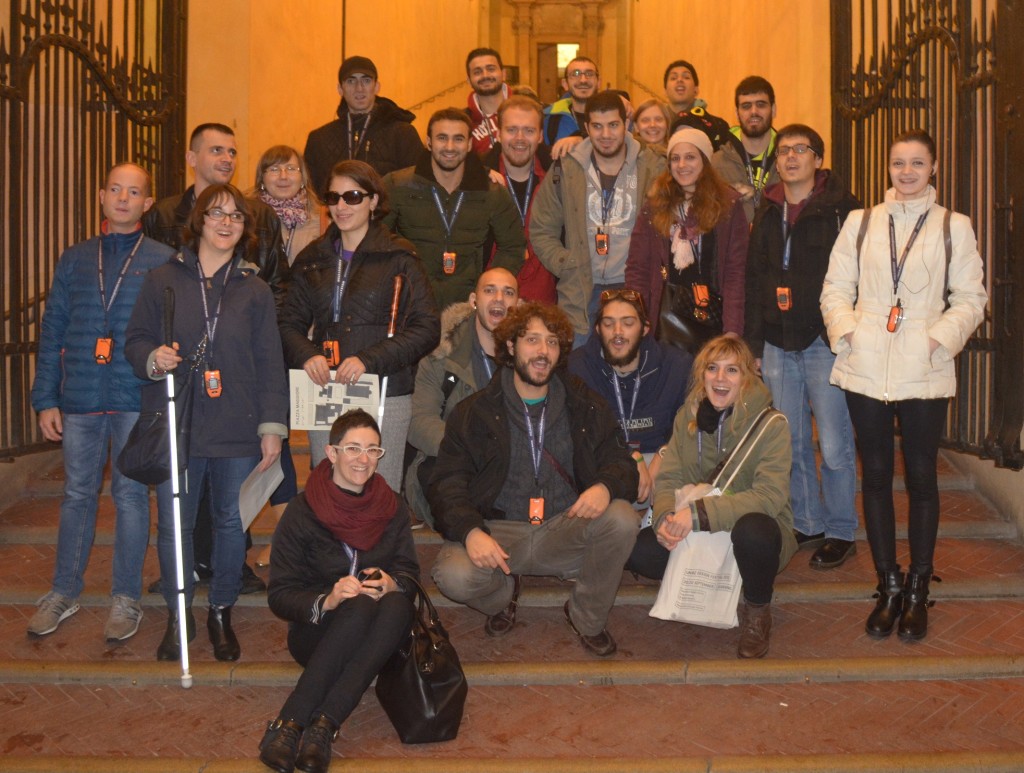
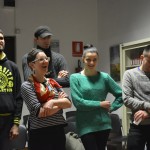
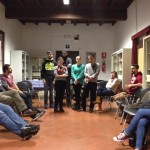
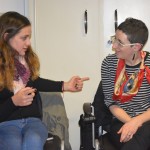
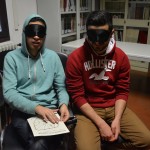

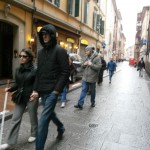
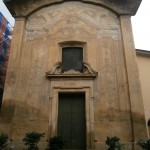
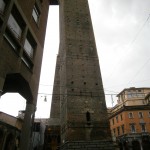
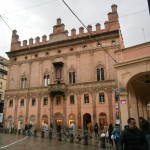
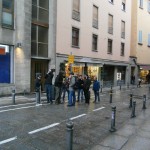
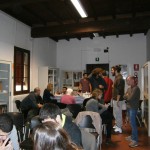
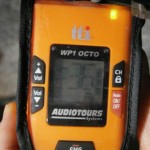
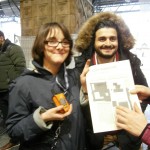
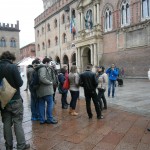
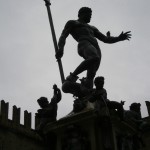
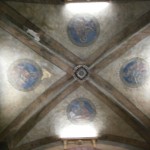
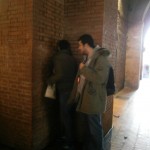
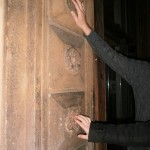
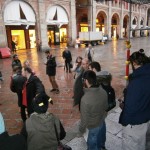
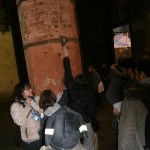
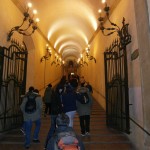
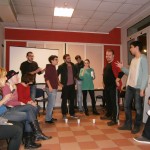
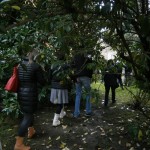
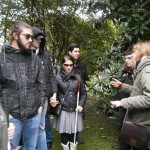
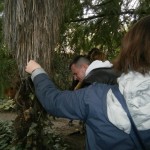

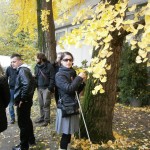
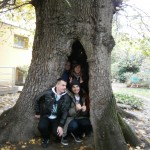
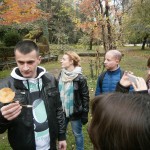
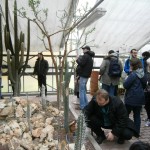
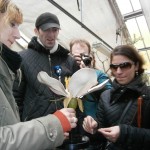

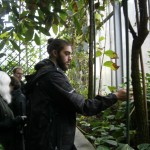
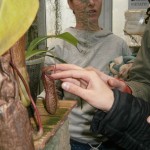
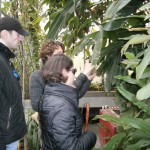
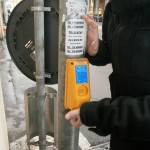
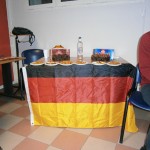

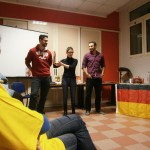
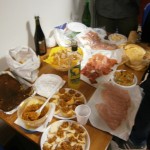
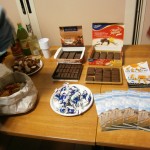

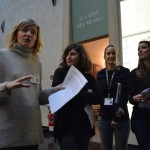
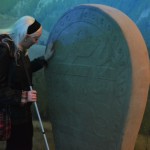


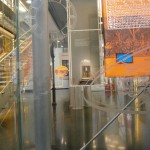
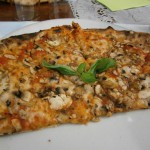

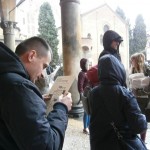
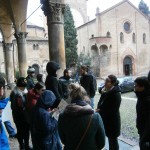
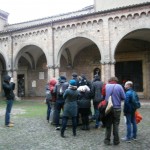
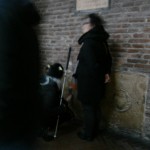
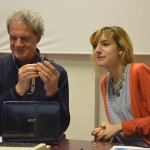
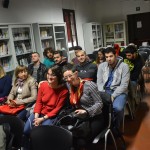
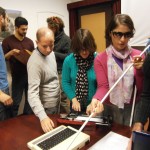
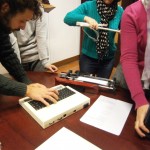
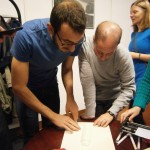
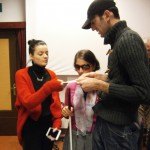
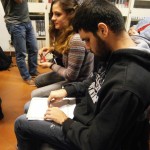
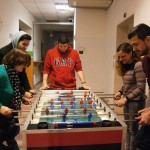


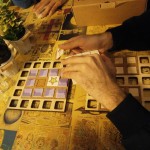
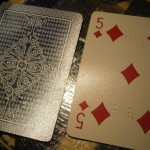
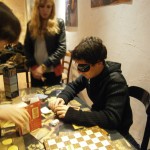
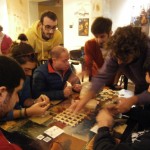
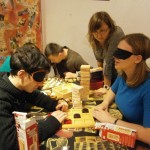
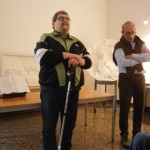
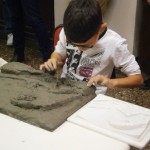
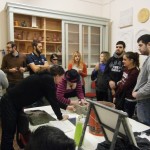
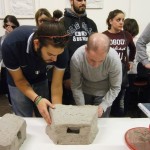
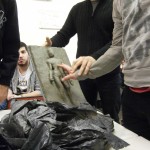
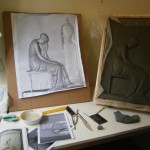
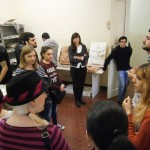
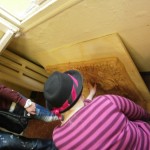
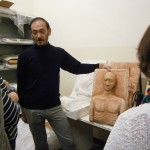
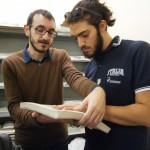
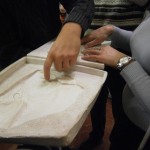

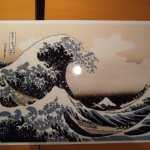
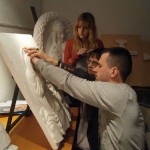
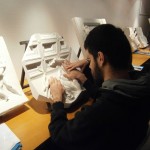
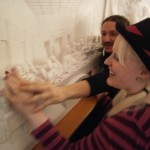
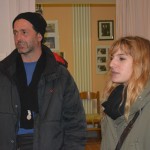
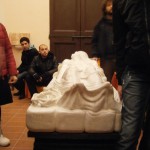
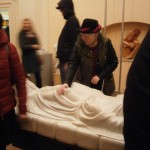
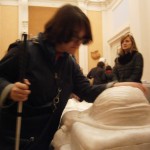
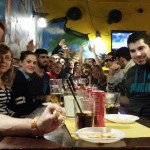

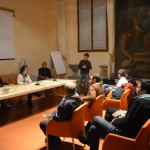
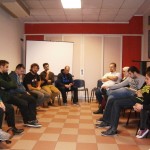

There are currently no comments on “International Exchanges on Visual Impairment the Arts”. Perhaps you would like to add one of your own?